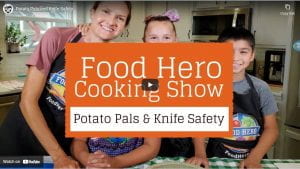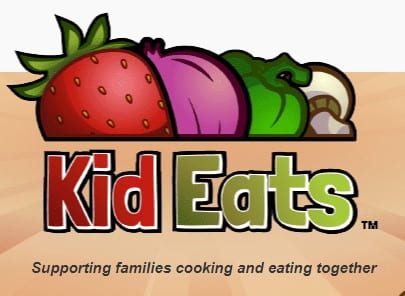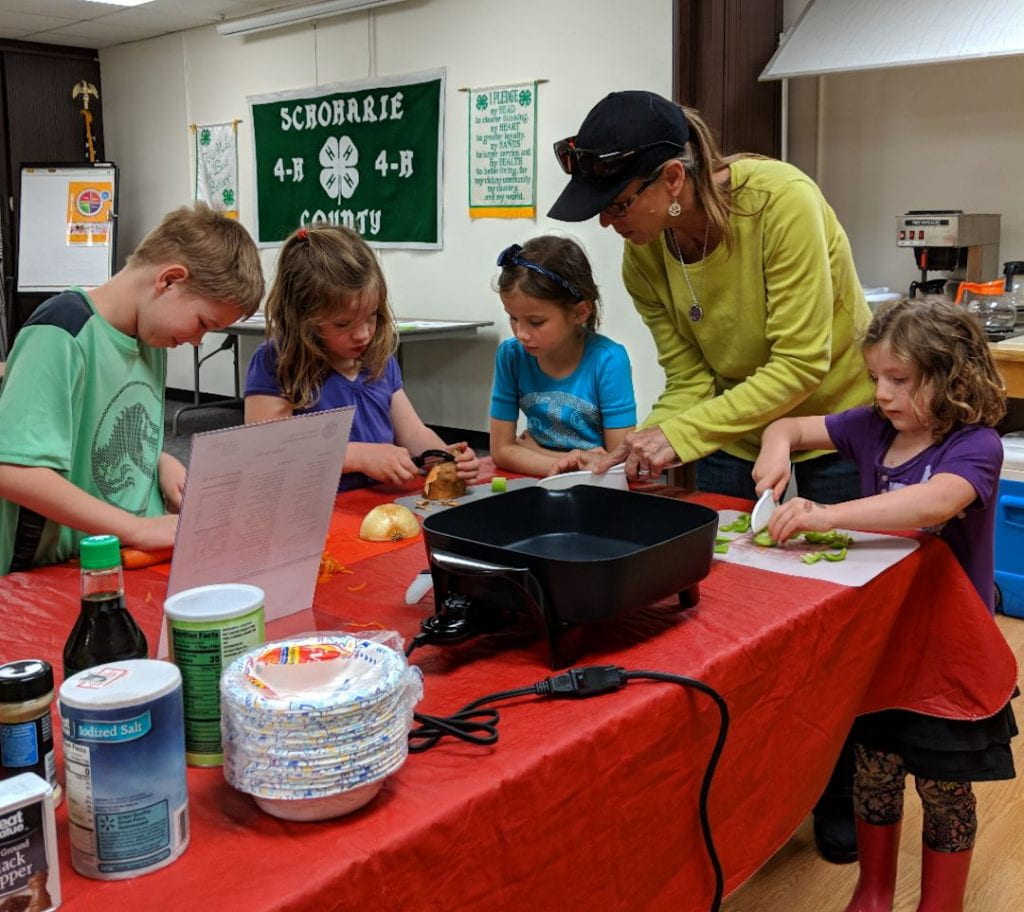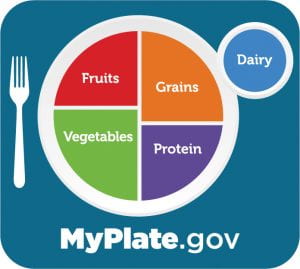Good nutrition and cooking skills are important for adults, but they aren’t magically bequeathed us when we turn 18! If you want your kids to eat well now—and have the skills and knowledge they’ll need to continue eating well when they strike out on their own—start inviting them to help in the kitchen as soon as possible.
Getting your picky eater involved in food prep means they will be less likely to reject what is made. Give praise to effort, rather than perfect results: practice makes perfect and builds self-esteem. These are also great opportunities to practice math and reading skills while spending quality time together.
Set up a lower surface at which they can work (countertops may be too high, and stools can be unstable). Remember at all ages to instill food-safety basics: washing hands, pulling back hair, keeping surfaces clean, checking for allergens, avoiding double dipping when using tasting spoons, not licking unwashed hands that touched raw meat and poultry, cooking foods fully, and putting food away promptly.
Age-appropriate tasks
These suggested tasks are general guidelines; children develop at different rates. Give them supervision, especially if you’re giving them a new task.
Age 2-3:
• Wipe tables, and put things in the trash
• Hand things to an adult, such as during and after grocery shopping
• Tear lettuce or greens for salad, snap green beans, squeeze citrus fruits
• Rinse veggies, fruits, and canned beans
• Scoop mashed potatoes, stir batter
• Help “read” a recipe and add ingredients
• Name and count foods
• Identify adult-only tasks: hot surfaces and sharp knives!
Age 4-5: everything above plus…
• Help set the table
• Help collect ingredients
• Help measure dry and liquid ingredients
• Peel eggs, crack eggs, use an egg beater
• Use cookie cutters
• “Paint” cooking oil using a pastry or basting brush
• Set a timer
• Crumble cheese
• Mash soft foods
Age 6-7: everything above plus…
• Scoop out avocados
• Use a peeler
• Help load the dishwasher
• Shuck corn
• Use plastic knives to slice and chop soft foods like fruits
• Use kitchen scissors to cut herbs or green onions
Age 8-9: everything above plus…
• Use a can opener
• Pound chicken and meats on a cutting board
• Put leftovers into containers
• Help check the temperature of meats with a food thermometer
• Preheat an oven
• Use a blender with assistance
• Form meatballs
• Help plan a meal (including food shopping)
Age 10-12: at this age, they might be able to work independently in the kitchen sometimes
• Pour batter and flip pancakes
• Boil pasta
• Microwave foods according to instructions.
• Follow a recipe on their own, including reading each step and measuring ingredients properly
• Slice and chop vegetables
Teenagers: if they’ve been helping in the kitchen for years…
• Young teens should then be able to make simple meals for themselves, and maybe even make a side dish for the family.
• Older teens should have the skills, knowledge, and experience to safely execute meals from planning to putting away leftovers. They’re ready to feed themselves when they fly the nest, and impress friends and please potential life partners!
Setting the table . . . with MyPlate
It’s also important to help kids make healthy food choices. Did you know that the MyPlate messages are meant for everyone age 2 and older? Your child’s plate may be smaller than yours, but the rules for healthy eating are the same:
• Make half your plate vegetables and fruits (a bit more veg than fruit)
• Eat the rainbow
• Make at least half the grains you eat each day whole grains
• Vary your lean protein
• Have dairy (or soy milk) each day for calcium
• Limit added sugars and fats (especially saturated fats)
You might be surprised that the recommended number of calories may not be much lower for your child than for you, and your teen might need more calories than you. It’s based not just on age and sex, but activity level and any weight-change goals you have. Basically, your 5-year-old who doesn’t seem to be able to sit still, their tween sibling who has discovered gaming and can’t be peeled away from the sofa, and grandma who keeps meaning to start a regular physical activity plan but hasn’t yet might all need the same number of calories! Everyone in the family can get a customized recommendation using the MyPlate Plan app (www.myplate.gov/myplate-plan).
ONLINE RESOURCES FOR KIDS IN THE KITCHEN:
recipes and more!
There are many well-meaning resources related to kids in the kitchen. Here are a handful of free websites with reliable science- and research-based information.
Team Nutrition
 The USDA created a series of lesson plans for kids ages 8 to 12 using cooking-based nutrition activities for an afterschool setting. It’s great for at-home use, too, because they also created family handouts that include readable information about skills and food safety, guidance for parents, and two renderings of the recipe that is featured in each lesson: a traditional version and a “look and cook” version that younger siblings can understand. There are also well-produced accompanying videos of kids creating the recipes with the guidance of adults: applesauce, scrambled eggs with spinach, corn and zucchini pancakes, grain bowls, and salad with homemade vinaigrette dressing. Find these resources here: www.fns.usda.gov/tn/cooks.
The USDA created a series of lesson plans for kids ages 8 to 12 using cooking-based nutrition activities for an afterschool setting. It’s great for at-home use, too, because they also created family handouts that include readable information about skills and food safety, guidance for parents, and two renderings of the recipe that is featured in each lesson: a traditional version and a “look and cook” version that younger siblings can understand. There are also well-produced accompanying videos of kids creating the recipes with the guidance of adults: applesauce, scrambled eggs with spinach, corn and zucchini pancakes, grain bowls, and salad with homemade vinaigrette dressing. Find these resources here: www.fns.usda.gov/tn/cooks.
Look-and-cook recipes from “Discover MyPlate”
 For the younger crowd, the USDA created a curriculum called “Discover MyPlate” geared towards kindergarteners. The look-and-cook recipes from this series—Friendship Pockets, Crunchy Rainbow Wraps, Fruit-a-licious Breakfast Cups, and Food Group Friends—were collected at the USDA website. They are available in both English and Spanish, and can be downloaded and printed for free: www.fns.usda.gov/tn/discover-myplate-look-and-cook-recipes
For the younger crowd, the USDA created a curriculum called “Discover MyPlate” geared towards kindergarteners. The look-and-cook recipes from this series—Friendship Pockets, Crunchy Rainbow Wraps, Fruit-a-licious Breakfast Cups, and Food Group Friends—were collected at the USDA website. They are available in both English and Spanish, and can be downloaded and printed for free: www.fns.usda.gov/tn/discover-myplate-look-and-cook-recipes
How Dad Got Sick
 This comic book, created more than a decade ago by the USDA, has a boy explaining why it’s so important to follow food safety guidelines. The comic is out of print, but a pdf can be viewed and printed from this Oregon school’s website:
This comic book, created more than a decade ago by the USDA, has a boy explaining why it’s so important to follow food safety guidelines. The comic is out of print, but a pdf can be viewed and printed from this Oregon school’s website:
www.reynolds.k12.or.us/sites/default/files/fileattachments/nutrition_services/page/39471/secondary_t12-8_how_dad_got_sick.pdf.
Chefs in Training
From the National Institute of Health comes this handy list of recommended kitchen tasks for kids with accompanying recipes to practice with:
healthyeating.nhlbi.nih.gov/chefTraining.aspx?linkId=3.
Food Hero Cooking Show
 Twenty-six episodes of kids helping adults create healthy, tasty, affordable, flexible—and quick—meals: www.foodhero.org/food-hero-cooking-show
Twenty-six episodes of kids helping adults create healthy, tasty, affordable, flexible—and quick—meals: www.foodhero.org/food-hero-cooking-show
Shake up tasty snacks
With these recipe-activities from Penn State Extension, kids get to shake up ingredients in bags and jars to help create tasty, healthy snacks. Just
add music! bkc-od-media.vmhost.psu.edu/documents/Lunches72.pdf.
Recipes for cooking with kids
More recipe ideas, broken out into categories like “Cool Drinks” and “Microwave Magic,” from the University of Nebraska-Lincoln: food.unl.edu/recipes-cooking-kids.
Kid Eats
 Short (under three minutes each) sped-up videos of mainly kids—with some help or supervision from adults—making recipes like hummus, salsa, and banana breakfast cookies. Includes a helpful preliminary video featuring knife skills for kids. kideatscooking.com.
Short (under three minutes each) sped-up videos of mainly kids—with some help or supervision from adults—making recipes like hummus, salsa, and banana breakfast cookies. Includes a helpful preliminary video featuring knife skills for kids. kideatscooking.com.
IN-PERSON RESOURCES FOR KIDS IN THE KITCHEN
 Did you know our nutrition educators gladly welcome children (along with a registered adult) in our free nutrition education/cooking series? Classes are offered in person at our Cobleskill, Cooperstown, and Oneonta outreach offices, at spaces provided by partner organizations around both counties, and via Zoom. We are also able to work one on one with families!
Did you know our nutrition educators gladly welcome children (along with a registered adult) in our free nutrition education/cooking series? Classes are offered in person at our Cobleskill, Cooperstown, and Oneonta outreach offices, at spaces provided by partner organizations around both counties, and via Zoom. We are also able to work one on one with families!
Contact us to let us know about your interest. We look forward to working with you! Michelle Leveski, mml39@cornell.edu, 518-234-4303 ext. 115, or Kimberly Ferstler, kmf239@cornell.edu, 518-234-4303 ext. 120


